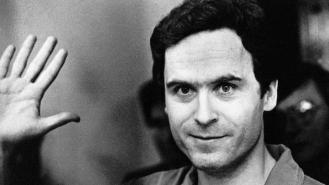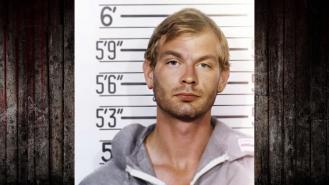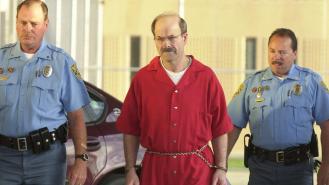
The Dating Game Killer: 6 creepy facts about Rodney Alcala
Rodney Alcala was 'The Dating Game Killer’, so-called for an appearance he made on reality television while an active serial killer. In 1980, he was sentenced to death for the murder of a twelve-year-old girl, but not before he sexually assaulted, attacked and murdered many others.
These are some of the creepiest details about the serial murderer and rapist.
1. His 'The Dating Game' appearance
It’s one of the most infamous details about the case. In September 1978, Alcala went on the television show The Dating Game, during which he answered questions in the hope of winning a date with the bachelorette, Cheryl Bradshaw (you can view the footage on YouTube). What’s more, he won.
Unbeknownst to those involved, Alcala was a convicted rapist, on the FBI’s Ten Most Wanted fugitive list, and had already committed murder.
Luckily for Bradshaw, she refused to go on the date with Alcala, sensing ‘weird vibes’. She wasn’t alone. Executive producer Mike Metzger felt uncomfortable around him, and fellow contestant Jed Mills described him as ‘creepy’.
2. He was a child molester
In 1968, Alcala abducted eight-year-old Tali Shapiro on her way to school. He took her back to his apartment, beat her and raped her. Thanks to a witness who had seen Alcala pick up Shapiro and called the police, he was interrupted and Shapiro survived the attack. Alcala, however, escaped out the back door and went on the run.
Using an assumed name, he fled to New York and attended NYU—coincidentally studying film under Roman Polanski. He was only arrested in 1971 after he was recognised from an FBI poster by teenagers. He had been working as a counsellor at a girls’ camp.
Although he was convicted of the crime, in 1974, he was released on parole. Within two months, he picked up a thirteen-year-old and assaulted her too. They were caught by a ranger and Alcala returned to prison until 1977—a year before his TV appearance.
In 1979, he abducted twelve-year-old Robin Samsoe on her way to ballet class. Her body was found twelve days later. She had been decapitated and her hands were missing. Her earrings were later found in a storage locker, in which Alcala held many similar trophies from his other victims. It was her murder that finally led to his conviction.
3. He also targeted adult women
Alcala’s criminal activity started as early as 1963 when he was a teenager in the military. He followed a woman in New York and struck her with a Coke bottle. Although he was arrested and charged by the military for being absent without leave, he managed to escape back home. While there, he exposed himself to his sister, leaving her hysterical. He was then honourably discharged.
In 1971, while Alcala was on the run after attacking Tali Shapiro and living under the assumed identity of John Berger, Cornelia Crilley’s body was found in her New York apartment by her boyfriend and police. She had been raped and strangled with a stocking. Her breasts had bite marks, but the case eventually went cold.
In 1977, Alcala was out of prison on parole. For some reason, his parole officer gave him permission to go on holiday to New York. While there, he murdered another woman: 23-year-old Ellen Hover, a nightclub heiress. Friends said Alcala pressured her into a lunch date, from which she never returned.
After the murder, Alcala escaped back to California. Though he had admitted meeting her to the police, he denied anything further and as her body hadn’t been found, there wasn’t enough evidence to arrest him. Her remains were found eleven months later.
Between 1977 and 1979, he raped, tortured and brutally murdered Christine Thornton (who was pregnant at the time); eighteen-year-old Jill Barcomb; 27-year-old Georgia Wixted; 32-year-old Charlotte Lamb; and 21-year-old Jill Partmentaue. None of the crimes would be solved until decades later.
4. He used photography to lure women
Alcala spent time working as a wedding photographer, but would pose as a fashion photographer to approach women and girls. It was a lie that gave him access to multiple potential victims, of whom he took hundreds of photos. Police later found his collection which included sexually explicit photos of boys, women and girls. Many of the subjects were naked, others were put in compromising positions.
Portraits of Cornelia Crilley were included. It was how he made contact with Hover, Barcomb and Wixted. It was also how he initially approached Robin Samsoe, after spotting her with friends on the beach, although she refused his advances.
Many of the women in the photos remain unidentified. In 2010, police released the images to the general public in the hope the subjects could be named.
5. He tortured his victims
Not only did Alcala murder his victims, but he also tortured them. Shapiro was raped and beaten with a steel pipe. Bite marks on victims’ bodies became a signature. One sixteen-year-old victim described being beaten and punched until she almost drowned in her own blood. He would strangle his victims, let them come to and then repeat the process.
6. Convictions came decades after the crimes
It took over 30 years to connect Alcala conclusively to the murders of Cornelia Crilley and Ellen Hover.
The murders of Barcomb, Wixted, Lamb and Partmentaue were only definitively connected to Alcala in 2003, through DNA testing of jewellery they found in Alcala’s storage locker.
In 2010, he became a person of interest in the murders of thirteen-year-old Antoinette Wittaker (killed in 1977) and seventeen-year-old Joyce Gaunt (killed in 1978).
Christine Thornton was murdered in 1977. Her body wasn’t found until 1982 and only identified in 2015. In 2016, Alcala was charged with her murder. He had killed her after he murdered Ellen Hover.
Alcala has been definitively connected to eight murders, but his true number of victims is unknown and thought to be much higher.








